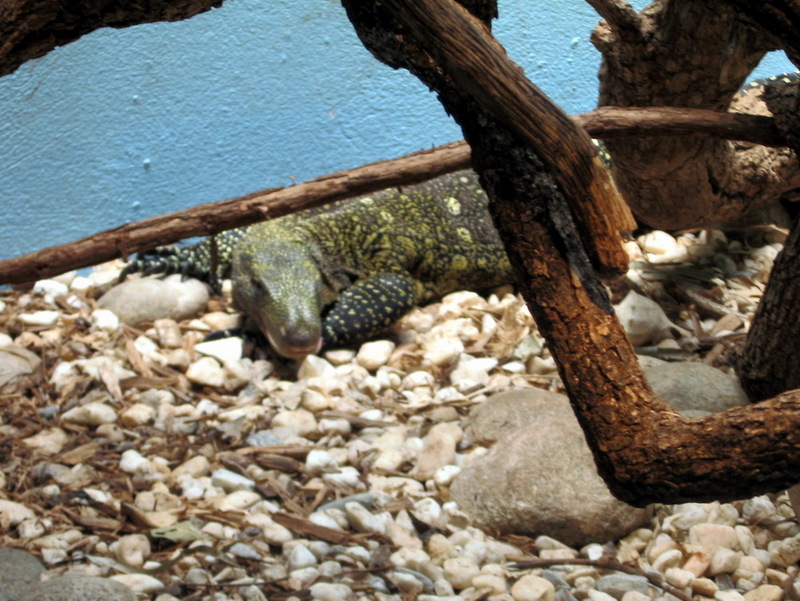|
Papua Monitor (Varanus salvadorii) - Wiki
| 제목: | Papua Monitor (Varanus salvadorii) - Wiki
| |

| 해상도: 1000x751
파일크기: 304635 Bytes
촬영일: 2005:12:18 22:00:42
사진기: Canon PowerShot A530 (Canon)
F number: f/5.0
Exposure: 1/50 sec
Focal Length: 18353/1000
등록시간: 2007:09:20 19:38:51
|
Papua monitor
From Wikipedia, the free encyclopedia
[Photo] A Papua monitor at the OKC Zoo. Date: 18 December 2005. Photo by http://en.wikipedia.org/wiki/User:Mitternacht90 and released to public domain
The Papua monitor, Varanus salvadorii (also known as Salvadori's monitor, Crocodile monitor, or Artelia) is a little-studied monitor lizard that lives on the island of New Guinea. It is found in mangrove swamp and coastal rain forest in the south east of the island. It is rumored that the creature can grow to a length of 15 feet (4.75 metres), which would make it the longest lizard in the world. However, much of this length is made up of the tail, which alone can be over 10 feet (3 metres). The longest recorded specimen was 11 ft 2 in long. Females reach sexual maturity at about 5 ft (1.5 meters). At birth it is already 18 inches (45 cm) long.
The body of the lizard is dark green with rings of yellow spots. The tail is banded yellow and black. It has a bulbous snout, which has led to it being called the tree crocodile. It has long straight teeth and prominent curved claws. There is little difference between males and females.
The Papua monitor is an arboreal lizard, and the tail may be used while climbing. It can hang onto branches with its rear legs and sometimes use the tail as a prehensile grip. The tail might also be used for defense. Captive specimens have attempted to whip their keepers with their tails. Its diet has not been carefully studied; it probably takes birds eggs, and small animals, perhaps especially birds, as well as carrion.
The species name honors Tommaso Salvadori, an Italian zoologist.
http://en.wikipedia.org/wiki/Papua_monitor
| The text in this page is based on the copyrighted Wikipedia article shown in above URL. It is used under the GNU Free Documentation License. You may redistribute it, verbatim or modified, providing that you comply with the terms of the GFDL. |
|
댓글 |
|---|
| | 손님 |
|
Scientific Name: Varanus salvadorii (Peters & Doria, 1878)
Common Names: Crocodile Monitor, Salvadori's Monitor, Papuan Monitor
Synonyms:
Monitor salvadorii Peters & Doria, 1878
Varanus salvadori
Varanus (Papusaurus) salvadorii - MERTENS 1962 |
^o^
동물그림창고 똑똑전화 누리집
^o^
|
|
|

